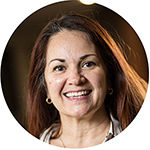rief arises after we face loss: a change in roles, shifts in values and belief systems, death or illness. You may be feeling grief right now as our world transforms with the Covid-19 pandemic. As we transform with each loss, there is no doubt that we carry the impact with us—even to the workplace. While the nature of grief is subjective and wayward, there are helpful things leaders can do to facilitate grieving in the workplace.
Talk about the uncertainty
Covid-19 Virtual Support Sessions
These sessions provide emotional support, coping tips and connection for all personnel working in patient care areas during the Covid-19 crisis.
This confidential service is available Monday – Friday currently at the following times:
8:00 a.m. – 8:30 a.m.
12:00 p.m. – 12:30 p.m.
5:00 p.m. – 5:30 p.m.
To request a separate individual or group session, please contact the Resiliency Center at resiliencycenter@hsc.utah.edu or 801-213-3403 (Alternative times available upon request).
Many teams are currently facing uncertainty about their work. Those grappling with redeployment face leaving behind a familiar team and support network, as well as having to rapidly learn new skills and confront new challenges. Nursing director Trell Inzunza spent many years preparing fellow sailors to deploy when she was a non-commissioned officer in the Navy. She recommends addressing the stress that employees feel during uncertainty, both at work and at home.
 "Try asking exploratory questions–how do you deal with stress? What are some things you can do regularly to address stress? Do you have a support network of friends you can emotionally rely on? Talk about what they're feeling. Helping employees prepare for upcoming stress is something the military regularly does, and it's something we can borrow from now."
"Try asking exploratory questions–how do you deal with stress? What are some things you can do regularly to address stress? Do you have a support network of friends you can emotionally rely on? Talk about what they're feeling. Helping employees prepare for upcoming stress is something the military regularly does, and it's something we can borrow from now."
—Trell Inzunza, Nursing Director, Nursing Support Services
Leaders are not alone in providing support to their teams. The Resiliency Center is currently offering Covid-19 Virtual Support Sessions, which provide emotional support, coping tips and connection for all personnel working in patient care areas during the Covid-19 crisis.
Take a moment
People who are grieving often notice that feelings can overwhelm them unexpectedly. Health care professionals may find themselves similarly taken by surprise emotions, especially when there is a difficult patient outcome.
 “When our group lost a number of pediatric patients, coming together to share our feelings was instrumental in grieving. Each of us wondered what we could have done differently. Being able to express those sentiments within a team that was feeling the same way made it ok. It is never easy to lose a patient, particularly a child, yet the common bond of our clinical staff helped us all to heal a little sooner and to become stronger in our service to other families.”
“When our group lost a number of pediatric patients, coming together to share our feelings was instrumental in grieving. Each of us wondered what we could have done differently. Being able to express those sentiments within a team that was feeling the same way made it ok. It is never easy to lose a patient, particularly a child, yet the common bond of our clinical staff helped us all to heal a little sooner and to become stronger in our service to other families.”
—Wendy L. Hobson-Rohrer, MD, Associate Vice President, Health Sciences Education
One tool used in some medical settings is “the pause.”1 This is a practice of pausing together as a team after a patient death. The pause takes about one minute and is a chance to honor the patient by holding silence, recognizing that the person was loved, and acknowledging the efforts given in their care. This practice has shown to help team members acknowledge feelings of grief and distress. View and download a script for performing the pause here.
Learn how grief works
Grief is meant to slow us down. The whole body suffers grief, therefore the whole body needs to process it. Whether the loss is big or small, some part of our life as we know it has ended. By slowing down, the body and brain can mourn; one can begin to comprehend a different version of life. Eventually, we make meaning while moving forward—honoring that which was lost.
 “Our small team experienced deaths of two colleagues only a few days apart. We really worked to uniquely acknowledge and create space for each individual. For one, we held a session facilitated by the Resiliency Center and a Chaplain; for the other, an avid writer, we have a writing workshop planned. I’m so grateful I get to share space with a team that has been so deeply supportive of me, and of one another. I know I’m not alone in my grief.”
“Our small team experienced deaths of two colleagues only a few days apart. We really worked to uniquely acknowledge and create space for each individual. For one, we held a session facilitated by the Resiliency Center and a Chaplain; for the other, an avid writer, we have a writing workshop planned. I’m so grateful I get to share space with a team that has been so deeply supportive of me, and of one another. I know I’m not alone in my grief.”
—Ashlee Bright, Communications and Public Affairs Director Huntsman Cancer Institute
The opportunity to make our own meaning is true for all losses, not just those associated with death. Some examples of non-death losses include divorce or changes in a relationship; illness of self or loved ones; and job or role changes. Having a better understanding can foster compassion for ourselves and others.
Get and give support
There are many options for employees to get support. Chaplains support patients spiritually throughout their stay, especially through the death process. They accompany other team members when it comes to the emotional care of patients, families, and staff dealing with loss.
 “On the palliative care team, I facilitate a weekly ritual of remembrance and release of the patients that passed in the previous week. This helps us find closure each week, creating space for the next. We say each person's name, allow for silence or conversation about how the patient or families have touched us. Then the dissipating sound from striking a singing bowl, reminds us how something experienced changes over time.”
“On the palliative care team, I facilitate a weekly ritual of remembrance and release of the patients that passed in the previous week. This helps us find closure each week, creating space for the next. We say each person's name, allow for silence or conversation about how the patient or families have touched us. Then the dissipating sound from striking a singing bowl, reminds us how something experienced changes over time.”
—Rev. Lorie Nielson, BCC, Chaplain
There is a grief support group for both community members and employees called "Caring Connections." Sessions occur throughout the year, on campus and in various locations throughout the valley.
The Resiliency Center is also available to all University of Utah Health employees. Individuals can meet with a mental health expert for a resilience consult, which is a great place to start for anyone wondering if they should talk to someone. The Resiliency Center can work with teams affected by loss, including the death of a colleague or an adverse patient outcome.
 “When our co-worker died suddenly on a weekend I reached out to the Resiliency Center for grief support for staff. Even though it was just a small group that participated, many appreciated that the opportunity was offered. The culture at work is a natural place of friendships, caring for each other and demonstrating support of each other.”
“When our co-worker died suddenly on a weekend I reached out to the Resiliency Center for grief support for staff. Even though it was just a small group that participated, many appreciated that the opportunity was offered. The culture at work is a natural place of friendships, caring for each other and demonstrating support of each other.”
—Amy Sikalis, Director Research and Science, Department of Radiology and Imaging Sciences
Many individuals at the University reach out on a daily basis to each other as friends, peers, mentors, etc. These relationships often carry a natural avenue for peace and healing. If this isn’t so natural for you, learning supportive phrases is a good place to start.
However you get or give support, each effort strengthens a shifting belief in the health care landscape—that it’s ok to be human at work.
References
1. Crumbie-Barrick K, Black J. Caring for the caregiver: nurses’ responses to critical incidents and interventions to improve coping. Oral presentation at: Ohio State University Summit on Promoting Well-Being and Resilience in Healthcare Providers; September, 2018; Columbus, OH
Megan Jean Whitlock
We’re all managing unprecedented stress and fear. What is “normal” right now? How do I cope? Social worker Jean Whitlock describes how our body protects us and offers some strategies to help.
We have personal protective equipment (PPE) for our body–but what about our mind? Huntsman Cancer Institute nurse manager Cassidy Kotobalavu has lead training on the concept of emotional contagion–how good (and bad) emotions spread. Here are Cassidy’s expert tips (with slides) on managing emotional contagion in health care.
When life gets busy, it’s easy to forget what keeps us grounded and therefore more satisfied with life. Sydney Ryan reflects on the importance of making time for yourself and prioritizing what is important for you. She explains simple, deliberate actions that have made a difference in her work and her life.
